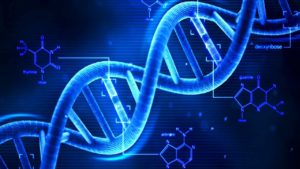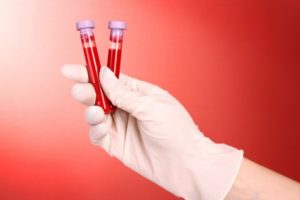Bay Biosciences provides high quality, clinical grade fresh frozen cryogenically preserved biopsy tissue samples with matched sera (serum), plasma and peripheral blood mononuclear cells (PBMC) biofluid samples from patients with Chronic Obstructive Pulmonary Disease (COPD).
The sera (serum), plasma and PBMC biofluid samples are collected and processed from patient’s peripheral whole-blood using customized collection and processing protocols. The specimens are collected from unique patients with Chronic Obstructive Pulmonary Disease (COPD) and provided to a valued pharmaceutical customer for diagnostics, research, development and drug discovery.

Chronic Obstructive Pulmonary Disease (COPD) Overview
Chronic Obstructive Pulmonary Disease (COPD) is a chronic inflammatory lung disease that causes obstructed airflow from the lungs. Over the period of time, COPD makes it harder to breathe. Symptoms include breathing difficulty, cough, mucus or sputum production and wheezing. It’s typically caused by long-term exposure to irritating gases or particulate matter, most often from cigarette smoking. Patients with COPD are at increased risk of developing heart disease, lung cancer and a variety of other conditions.
In Chronic Obstructive Pulmonary Disease (COPD), the airways in the lungs become inflamed and thicken, and the tissue where oxygen is exchanged is destroyed. The flow of air in and out of the lungs decreases. When this happens, less oxygen gets into the body tissues, and it becomes harder to get rid of the waste gas carbon dioxide. As the disease progresses (gets worse), shortness of breath makes it harder to remain active.
Chronic Obstructive Pulmonary Disease (COPD) is a group of diseases that include Emphysema and Chronic Bronchitis, these are the two most common conditions that contribute to COPD. These two conditions usually occur together and can vary in severity among individuals with COPD. Chronic Bronchitis is inflammation of the lining of the bronchial tubes, which carry air to and from the air sacs (alveoli) of the lungs. It’s characterized by daily cough and mucus (sputum) production.
Emphysema is a condition in which the alveoli at the end of the smallest air passages (bronchioles) of the lungs are destroyed as a result of damaging exposure to cigarette smoke (including secondary smoking) and other irritating gases and particulate matter. Many people with COPD have both of these conditions.
Chronic Bronchitis
Chronic Bronchitis irritates the bronchial tubes, which carry air to and from the lungs. In response, the tubes swell and mucus builds up along the lining. The buildup narrows the tube’s opening, making it hard to get air in and out of the lungs. Small, hair-like structures on the inside of the bronchial tubes called cilia, normally move mucus out of the airways. But the irritation from chronic bronchitis and smoking damages them. The damaged cilia can’t help clear mucus.
Emphysema
Emphysema is the breakdown of the walls of the tiny air sacs (alveoli) at the end of the bronchial tubes, in the bottom of the lung. The lung is like an upside down tree. The trunk is the windpipe or trachea, the branches are the bronchi, and the leaves are the air sacs or alveoli . The air sacs play a crucial role in transferring oxygen into the blood and carbon dioxide out. The damage caused by emphysema destroys the walls of the air sacs, making it hard to get a full breath.
Causes of Chronic Obstructive Pulmonary Disease (COPD)
Over time, exposure to irritants that damage your lungs and airways can cause chronic obstructive pulmonary disease (COPD), which includes chronic bronchitis and emphysema. The main cause of COPD is smoking, but nonsmokers can get COPD too. Following are the main known causes of COPD:
Smoking
Majority of all COPD cases, about 90% are caused by cigarette smoking. When a cigarette burns, it creates more than 7,000 chemicals, many of which are harmful. Tobacco smoke irritates airways, triggering inflammation (irritation and swelling) that narrows the airways. Smoke also damages cilia so they can’t do their job of removing mucus and trapped particles from the airways.
Exposure to the toxins in cigarette smoke weaken the lungs defense against infections, narrow air passages, cause swelling in air tubes and destroy air sacs. This also affects people who are not smokers themselves but are exposed to secondary smoke, from people who are smoking around them. Inhaling toxins are the main contributing factors for COPD.
Environment
Air quality in our environment plays an important part in developing COPD. What we breathe every day at home, at work and outside around our polluted environment can play a role in developing COPD. Long-term exposure to pollutants in the air, secondhand smoke and dust, fumes and exposure to chemicals, which are most often worksite related can cause COPD.
Alpha-1 Deficiency
A small number of people develop a rare form of COPD called Antitrypsin (Alpha-1) deficiency-related emphysema. This form of COPD is caused by a genetic (inherited) condition that is passed from parents to their children through their genes, it affects the body’s ability to produce a protein (Alpha-1) that protects the lungs. Alpha-1 occurs when there is a lack of a protein in the blood called alpha-1 antitrypsin, or AAT. The alpha-1 protein (AAT), is mainly produced by the liver. The main function of AAT is to protect the lungs from inflammation caused by infection and inhaled irritants such as tobacco smoke. When you have AAT, you don’t produce enough of the enzyme, called alpha-1 antitrypsin. Your lungs are more likely to become damaged from exposure to irritating substances like smoke and dust.

Chronic Obstructive Pulmonary Disease (COPD) Risk Factors
- Exposure to air pollution
- Working with toxic chemicals, dust or fumes
- Being a woman
- Being over the age of 65
- Alpha-1 antitrypsin deficiency (AAT), a genetic risk factor to develop COPD.
- A history childhood respiratory infections
Signs and Symptoms of Chronic Obstructive Pulmonary Disease (COPD)
Chronic Obstructive Pulmonary Disease (COPD) makes it harder to breathe. Symptoms may be mild at first, beginning with intermittent coughing and shortness of breath. As it progresses, symptoms can become more constant to where it can become increasingly difficult to breathe. Patients may experience wheezing and tightness in the chest or have excess sputum production. Some people with COPD have acute exacerbations, which are flare-ups of severe symptoms. Symptoms are likely to get much worse if you continue smoking or are regularly exposed to secondhand smoke.
Following are some of the common signs and symptoms of COPD:
- Cough with mucus that persists for long periods of time
- Difficulty taking a deep breath
- Dizziness
- Shortness of breath with mild exercise (like walking or using the stairs)
- Shortness of breath performing regular daily activities
- Wheezing
- A whistling or squeaky sound when you breathe
- Chest tightness
- Frequent colds, flu, or other respiratory infections
- Need to clear mucus from your lungs every day
- Chronic cough, with or without mucus
- Lack of energy
- Fatigue
- Fever
- Weight loss
- Swelling of the feet, ankles, or legs

Chronic Obstructive Pulmonary Disease (COPD) Diagnosis
COPD diagnosis is based on symptoms, a physical exam, and diagnostic test results. Some of the following diagnostics tests are performed:
- Spirometry is a noninvasive test to assess lung function (LFT). During the test, you’ll take a deep breath and then blow into a tube connected to the spirometer.
- Imaging tests include a chest X-Ray, CT scan. These images can provide a detailed look at your lungs, blood vessels, and heart.
- An arterial blood gas test involves taking a blood sample from an artery to measure your blood oxygen, carbon dioxide, and other important levels.
These tests can help determine if you have COPD or a different condition, such as asthma, a restrictive lung disease, or heart failure.
Chronic Obstructive Pulmonary Disease (COPD) Treatment
There is no cure for chronic obstructive pulmonary disease (COPD). However, treatments can help with symptoms, slow the progress of the disease, and improve the patients ability to stay active. There are also treatments to prevent or treat complications of the disease. Following COPD Treatments include:
- Lifestyle changes
- Medications
- Oxygen therapy
- Pulmonary rehabilitation
- Surgery

Detailed clinical data, biomarker information including Lung (pulmonary) function test results, CT, biopsy and pathology annotations, associated with the patients specimens from Chronic Obstructive Pulmonary Disease (COPD) is provided to a valued customer for drug diagnostics, discovery, development and research.
The sera (serum), plasma and PBMC biofluid samples were collected and processed using customized collection and processing protocols provided by the researcher.
Bay Biosciences is a global leader in providing researchers with high quality, clinical grade, fully characterized human tissue samples, bio-specimens and human bio-fluid collections from cancer (tumor) tissue, cancer sera (serum), cancer plasma, cancer PBMC and human tissue samples from most other therapeutic areas and diseases.
Bay Biosciences maintains and manages it’s own bio-repository, human tissue bank (biobank) consisting of thousands of diseased samples (specimens) and from normal healthy donors available in all formats and types. Our biobank procures and stores fully consented, deidentified and institutional review boards (IRB) approved human tissue samples and matched controls.
All our human human tissue collections, human specimens and human bio-fluids are provided with detailed samples associated patient’s clinical data. This critical patient’s clinical data includes information relating to their past and current disease, treatment history, lifestyle choices, biomarkers and genetic information. Patient’s data is extremely valuable for researchers and is used to help identify new effective treatments (drug discovery & development) in oncology, other therapeutic areas and diseases. This clinical information is critical to demonstrate their impact, monitor the safety of medicines, testing & diagnostics, and generate new knowledge about the causes of disease and illness.
Bay Biosciences banks wide variety of human tissue samples and biological samples including cryogenically preserved -80°C, fresh, fresh frozen tissue samples, tumor tissue samples, FFPE’s, tissue slides, with matching human bio-fluids, whole blood and blood derived products such as serum, plasma and PBMC’s.
Bay Biosciences is a global leader in collecting and providing human tissue samples according to the researchers specified requirements and customized, tailor made collection protocols. Please contact us anytime to discuss your special research projects and customized human tissue sample requirements.
Bay Biosciences provides human tissue samples (human specimens) from diseased and normal healthy donors; including peripheral whole-blood, amniotic fluid, bronchoalveolar lavage fluid (BAL), sputum, pleural effusion, cerebrospinal fluid (CSF), serum (sera), plasma, peripheral blood mononuclear cells (PBMC’s), saliva, Buffy coat, urine, stool samples, aqueous humor, vitreous humor, kidney stones, renal calculi, nephrolithiasis, urolithiasis and other bodily fluids from most diseases including cancer. We can also procure most human bio-specimens and can do special collections and requests of human samples that are difficult to find. All our human tissue samples are procured through IRB approved clinical protocols and procedures.
In addition to the standard processing protocols Bay Biosciences can also provide human plasma, serum, PBMC bio-fluid samples using custom processing protocols, you can buy donor specific sample collections in higher volumes and specified sample aliquoting from us. Bay Biosciences also provides human samples from normal healthy donors, volunteers, for controls and clinical research, contact us Now.
日本のお客様は、ベイバイオサイエンスジャパンBay Biosciences Japan またはhttp://baybiosciences-jp.com/contact/までご連絡ください。
